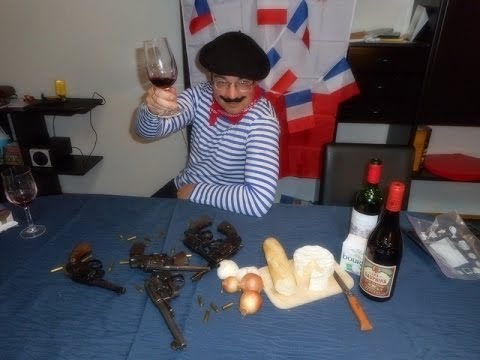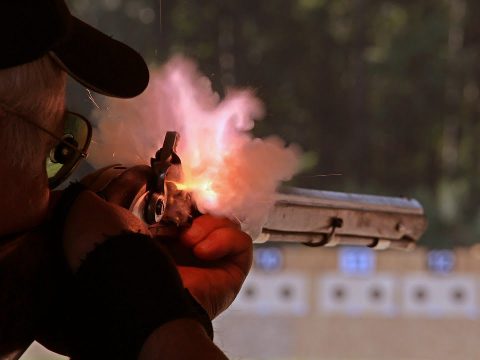Sold at auction for $1,725 (w/ 4 other revolvers).
This Dutch police revolver is an interesting example of technology being used as an element of police policy and procedure. The Dutch police administration in the late 1800s/early 1900s decided that officers should carry a blank round in the first chamber of their revolvers, a tear gas round in the second chamber, and actual live bullets only in the 3rd-5th chambers. This led to a problem of ensuring that officers were able to easily confidently know which type of ammunition they were firing at any given time – what if a cylinder happened to rotate while being drawn, holstered, or otherwise handled without the officer noticing? He might fire a live round when intended to use a blank, or vice versa.
The solution was to add a large manual safety that would lock the cylinder in position, and add large marking to the outside of the first two chambers indicating which was which. Setting aside the wisdom of this sort of progressive cartridge selection, the mechanical adaptation of the police revolvers is an interesting thing to see, and one of a relatively small number of revolvers to have manual safeties.

At Forgotten Weapons I think the most interesting guns out there are the most obscure ones. I try to search out experimental and prototype weapons and show you how they work, in addition to more conventional guns that you may not have heard of before. You’re much more likely to find a video on the Cei Rigotti or Webley-Fosbery here than an AR or Glock. So, do you want to learn about something new today? Then stick around!





